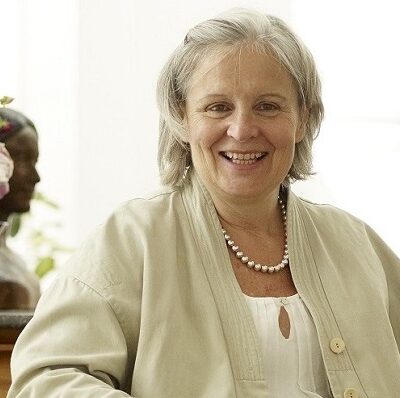Barbara Weiss
I grew up in Italy, attending a traditional Italian high school in the 60s and 70s. We studied a lot of Latin, Greek, History and Philosophy, but creative subjects were lacking. I always felt that that was a pity. Even though I didn’t come from a particularly creative family, from early on I was interested in old cities, particularly beautiful Italian ones, despite them being quite dilapidated at the time.
One fateful day, I spent time with a family friend, a Swiss Professor who told me about the several architecture courses he ran, and I found them all fascinating. As a result, I made the decision that very afternoon to enrol to become an architect!
After initially studying in Switzerland, I moved to the UK, where I completed my training at the Architectural Association in London. I was fortunate enough to meet a highly influential tutor during my second year at the school, who introduced me to James Stirling – one of the most celebrated architects of the time. Through a lucky opportunity, I ended up being employed by him as a student for six months, working closely with him on a competition and travelling multiple times to Florence with him. This was one of the most memorable experiences in my professional life. I then moved to New York and worked in several practices, gaining valuable experience. Finally, in 1987, I founded my own practice.
I am proud to have navigated my somewhat unique architectural practice, Barbara Weiss Architects, through more than 35 years of constant turbulence. The architectural profession is incredibly challenging and constantly fluctuates between highs and lows. As a female architect, it has been even more difficult, but I have never given up. Although success is never guaranteed, I am proud to have made it this far.
As a practice, we have never aimed to be fashionable but rather, to produce timeless designs evoking tranquillity, not ostentatiousness. I hope my legacy will be work that continues to bring happiness for years to come. It brings me great joy to hear clients say that the longer they reside in a place I have designed, the more they appreciate the reasons behind every decision – and the calm beauty of our spaces.
I also aspire to be remembered as a pioneering female architect who never gave up. One of my proudest achievements is co-founding Women in Architecture (WIA), a campaign that has been incredibly successful. Although no longer involved, it is very satisfying to see how much more confident young women architects are today, how many more women have joined the profession and how they are now being commissioned for big, interesting jobs that I could only have dreamt of.
Another way I hope to leave a mark is in the development of cities. It is so important to understand the histories of cities, how they have evolved, and how to maintain urban design and fabric in a way that preserves the historic diversity unique to each city. These considerations have led me to become very involved in a campaign against poor quality, inappropriate skyscrapers in London. I believe London has lost much of its charm due to the increasing number of tall buildings popping up everywhere. Although this was impossible to stop, we did manage to prevent the construction of some, to raise awareness and to gather a large following of people who share our views.
Looking at the legacies that have most influenced me, the first in mind is that of my Architectural Association tutor, Leon Krier. At that time, he was a young, opinionated but unique thinker from Luxembourg, with a passion for European cities. As I shared his passion, I learned a lot from him about what made these cities so special. Over time, he became a great friend. He is also Prince Charles’s architect and the architect of Poundbury, a new town near Dorchester built for Prince Charles. Leon Krier’s thinking and his theory about cities have inspired me greatly.
James Stirling is my other great hero. I loved working for him. While his unique style is quite different from mine, I learned enormously from him. He passed so many valuable lessons onto me, greatly informing my own creative thinking.
There are two female architects whose legacy I also greatly admire: Su Rogers and Eva Jiricna, both unique examples of women who have achieved it all and inspired future generations of women architects.
Circle Square Member Q&A
What 3 words best describe you? Stubborn, eternal optimist, eclectic
If you could offer your younger self one piece of advice, what would that be? Be more self-confident.
What do you consider to be your greatest achievement? Architecturally, I would probably say my own house: a labour of love, very complex, with every detail obsessively thought through.. BWA spent 21,000 hours on this project!
Which person (dead or alive) would you most like to invite to dinner? My father. He died before the house was finished and I would have loved for him to be able to see it.
How has age strengthened your advantage? They say that architects are ‘late bloomers’… this is certainly true in my case, especially being a woman. Now, as get older, I feel as if I am taken more seriously.
What inspired you to join Circle Square? The variety of conversations, the interesting and unexpected topics raised and the many members who’ve done so many different things.


